Table of Contents
ToggleImagine a city where traffic jams are a thing of the past and your morning coffee is brewed by a robot while you ride in a self-driving car. Welcome to the world of smart city technology, where innovation meets urban living. This isn’t just sci-fi fantasy; it’s happening right now, and it’s reshaping how people interact with their environments.
Smart city tech is like the Swiss Army knife of urban planning. From intelligent traffic management systems to energy-efficient buildings, these advancements promise to make city life not just bearable but downright enjoyable. It’s all about creating a seamless experience that keeps citizens connected, safe, and maybe even a little more entertained. Buckle up as we explore how this technology is turning cities into the ultimate playgrounds of the future.
Overview of Smart City Technology
Smart city technology integrates digital solutions into urban environments to improve efficiency, sustainability, and residents’ quality of life. Various components like IoT devices, big data, and advanced networks work together to create interconnected systems. Key innovations include smart traffic lights that adjust based on real-time traffic data, reducing congestion and optimizing travel times.
Public transportation benefits from smart city technology through real-time tracking, allowing users to plan their commutes effectively. Autonomous vehicles play a crucial role in enhancing mobility, providing safe and efficient transportation options. Energy-efficient buildings utilize smart systems to monitor usage patterns, significantly lowering energy consumption.
Waste management systems also leverage smart technology, using sensors to notify services when bins reach capacity. This streamlines collections and reduces operational costs, making waste management more efficient. Furthermore, smart city initiatives often involve public engagement platforms, allowing citizens to communicate with local governments and voice concerns or suggestions.
Data security underpins many smart city applications, ensuring that personal information remains protected while facilitating urban services. Challenges remain, such as infrastructure investment and technology adoption, but the benefits of smart city technology are clear. Enhanced connectivity, improved resource management, and increased civic engagement will play a pivotal role in shaping the future of urban living.
Key Components of Smart Cities

Smart city technology involves several key components that work together to foster innovation and improve urban living. These elements create a dynamic environment that enhances connectivity and efficiency for residents.
Internet of Things (IoT)
IoT devices play a crucial role in smart cities by connecting everyday objects to the internet. Sensors embedded in infrastructure monitor traffic flow and air quality, providing real-time data for analysis. Smart streetlights adjust brightness based on pedestrian activity, conserving energy while improving safety. Furthermore, connected devices enable better resource management, allowing city planners to respond quickly to changing conditions. The integration of IoT promotes sustainability through more efficient use of public services.
Big Data and Analytics
Big data and analytics transform urban planning and resource allocation. It captures vast amounts of information from various sources like transportation systems and energy grids. Data analytics helps decision-makers identify trends and patterns, leading to informed strategies for city improvement. Predictive analytics supports proactive measures, such as traffic management to reduce congestion. Enhanced insights contribute to more personalized services and better engagement with residents, ultimately fostering a stronger community.
Autonomous Transportation Systems
Autonomous transportation systems redefine mobility in smart cities. Self-driving cars and buses offer safe, efficient travel while reducing traffic congestion. Real-time data ensures smooth navigation and adaptive routing, catering to changing urban landscapes. Integration with public transport enhances connectivity, providing seamless transitions between different modes of transport. As these systems evolve, they promise to increase accessibility for all citizens, making urban environments more inclusive and user-friendly.
Benefits of Smart City Technology
Smart city technology offers numerous advantages that improve urban living experiences. These benefits include enhanced public safety, increased sustainability, and better quality of life for residents.
Improved Public Safety
Smart city technologies enhance public safety through integrated surveillance systems and emergency response mechanisms. Real-time data analysis allows authorities to identify crime hotspots and allocate resources efficiently. Connected streetlights equipped with sensors can monitor unusual activity, alerting law enforcement immediately. Digital platforms enable communities to report issues directly, fostering quicker responses to emergencies. Increased visibility through smart cameras helps deter crime and enhances citizens’ feelings of safety.
Enhanced Sustainability
Sustainability achieves new heights in smart cities through efficient resource management. Smart grids optimize energy usage, reducing waste and lowering costs. Water management systems use sensors to detect leaks and monitor consumption, ensuring sustainable water supply. Public transport upgrades, like electric buses and optimized routing, decrease carbon emissions while encouraging public transit use. Renewable energy sources integrate seamlessly, promoting clean power options for urban infrastructure.
Increased Quality of Life
Smart city technologies significantly elevate the quality of life for residents. Enhanced public transportation with real-time updates reduces wait times, making commuting more convenient. Smart parks equipped with free Wi-Fi and fitness equipment promote healthy lifestyles and community engagement. Noise and air quality monitoring improve urban environments, protecting residents’ health. Community platforms foster communication between citizens and local governments, ensuring that feedback leads to actionable improvements.
Challenges and Considerations
Smart city technology presents significant challenges and considerations that require attention for successful implementation.
Data Privacy and Security
Data privacy impacts citizens’ trust in smart city initiatives. Protecting personal information from breaches arms local governments with essential responsibility. Ensuring secure data storage requires advanced encryption measures. Cybersecurity risks escalate as connectivity increases. Transparent data usage policies empower residents, fostering confidence in smart technologies. Strategies for safeguarding data promote collaboration between city officials and technology providers.
Infrastructure and Investment
Infrastructure challenges arise as cities upgrade existing systems to accommodate smart technologies. Significant financial investments are essential for implementing new infrastructures like high-speed internet and smart grids. Local governments must prioritize investments that generate long-term benefits. Collaborative funding models can reduce the financial burden on municipalities. Balancing immediate costs against future savings encourages sustainable development and innovation. Comprehensive planning enhances integration of smart city solutions into the urban landscape.
Community Engagement
Community engagement remains critical for successful smart city initiatives. Involving residents in the decision-making process fosters a sense of ownership. Accessible platforms for feedback encourage citizens to voice their needs and concerns. Electrifying public interest through workshops and outreach programs enhances awareness of technology benefits. Tailoring solutions to fit community preferences ensures greater acceptance. Effective communication between local authorities and residents strengthens relationships, ultimately leading to improved urban living.
Future Trends in Smart City Technology
Smart city technology is on the brink of revolutionary advancements. Future trends promise to redefine urban living through intelligent systems and improved connectivity.
Integration of AI and Machine Learning
AI and machine learning enhance data processing within smart cities. These technologies analyze traffic patterns, optimize energy consumption, and improve public safety through predictive analytics. With AI, cities can efficiently allocate resources, such as deploying emergency services or managing power grids. Furthermore, machine learning algorithms learn from citizen interactions, tailoring services to meet evolving needs. Cities leveraging AI solutions report significant improvements in operational efficiency and the reduction of response times, benefiting all urban residents.
Expansion of 5G Connectivity
5G connectivity serves as the backbone of smart city infrastructure. This high-speed network supports the increasing number of IoT devices and enhances communication between them. With faster data transfer rates, real-time applications, such as autonomous vehicles and smart traffic systems, function seamlessly. Cities adopting 5G ensure that residents experience reduced latency and improved network reliability. The expansion of 5G sets the stage for innovations, such as augmented reality applications in urban planning and advanced telemedicine solutions. High-speed connectivity translates directly into better services and enriched urban experiences.
Smart city technology is paving the way for a new era of urban living. As cities embrace innovations like IoT, AI, and 5G connectivity, they’re transforming into interconnected environments that prioritize efficiency and sustainability. The potential benefits are immense, from enhanced public safety to improved quality of life for residents.
However, successful implementation hinges on addressing challenges such as data privacy and community engagement. By fostering collaboration between local governments and citizens, cities can ensure that technological advancements meet the needs of their communities. As smart city initiatives continue to evolve, they promise to create vibrant urban spaces where technology and human experience coexist harmoniously.



